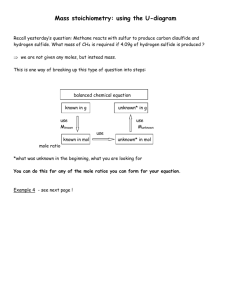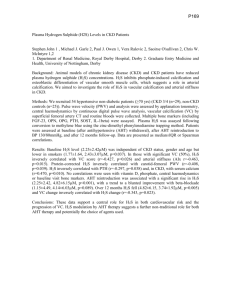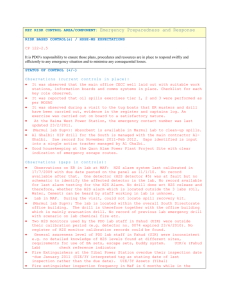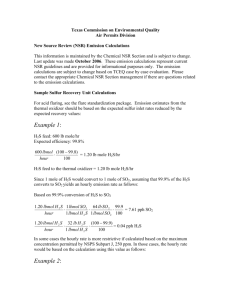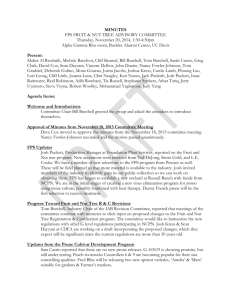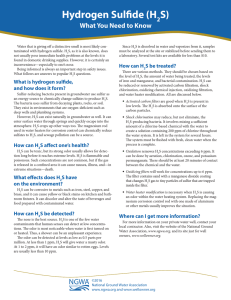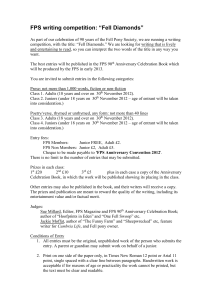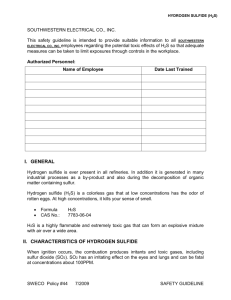CE 520 Environmental Engineering Chemistry
advertisement
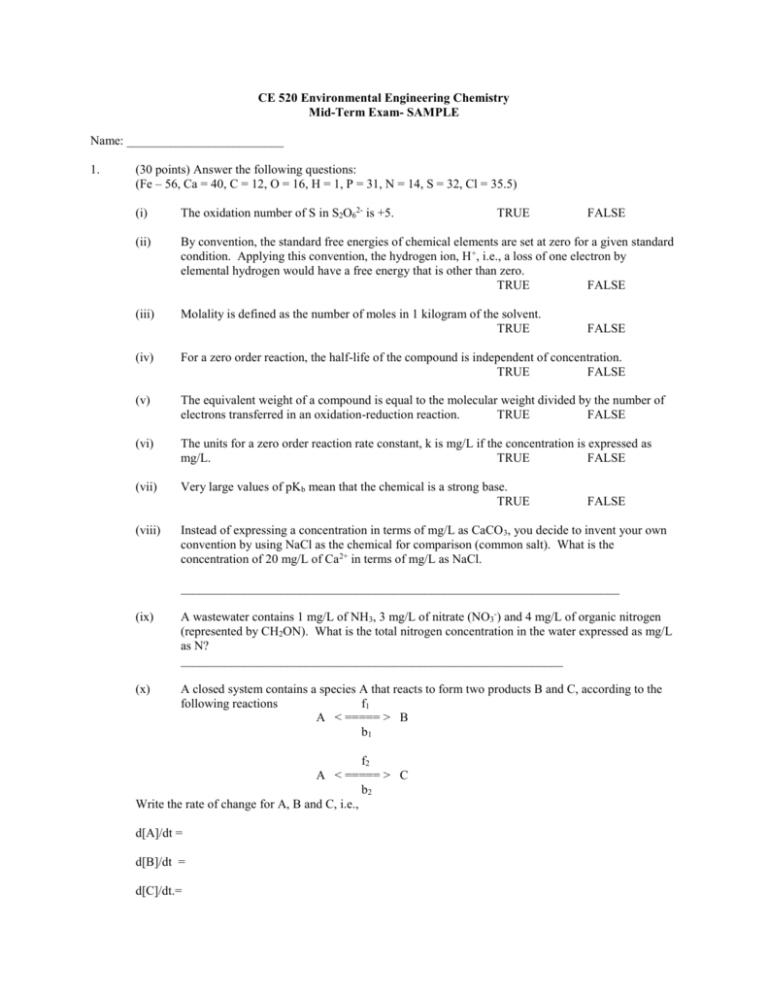
CE 520 Environmental Engineering Chemistry Mid-Term Exam- SAMPLE Name: _________________________ 1. (30 points) Answer the following questions: (Fe – 56, Ca = 40, C = 12, O = 16, H = 1, P = 31, N = 14, S = 32, Cl = 35.5) (i) The oxidation number of S in S2O62- is +5. (ii) By convention, the standard free energies of chemical elements are set at zero for a given standard condition. Applying this convention, the hydrogen ion, H +, i.e., a loss of one electron by elemental hydrogen would have a free energy that is other than zero. TRUE FALSE (iii) Molality is defined as the number of moles in 1 kilogram of the solvent. TRUE TRUE FALSE FALSE (iv) For a zero order reaction, the half-life of the compound is independent of concentration. TRUE FALSE (v) The equivalent weight of a compound is equal to the molecular weight divided by the number of electrons transferred in an oxidation-reduction reaction. TRUE FALSE (vi) The units for a zero order reaction rate constant, k is mg/L if the concentration is expressed as mg/L. TRUE FALSE (vii) Very large values of pKb mean that the chemical is a strong base. TRUE (viii) FALSE Instead of expressing a concentration in terms of mg/L as CaCO 3, you decide to invent your own convention by using NaCl as the chemical for comparison (common salt). What is the concentration of 20 mg/L of Ca2+ in terms of mg/L as NaCl. ______________________________________________________________________ (ix) A wastewater contains 1 mg/L of NH3, 3 mg/L of nitrate (NO3-) and 4 mg/L of organic nitrogen (represented by CH2ON). What is the total nitrogen concentration in the water expressed as mg/L as N? _____________________________________________________________ (x) A closed system contains a species A that reacts to form two products B and C, according to the following reactions f1 A < ===== > B b1 f2 A < ===== > C b2 Write the rate of change for A, B and C, i.e., d[A]/dt = d[B]/dt = d[C]/dt.= (2) A solution (closed system) contains 10-3 hydrogen sulfide (H2S), a diprotic acid with pKa1 = 7 and pKa2 = 12.9. (i) What is the equilibrium pH of this solution? (ii) What is the pH of a solution made by mixing 10 -4 M NaHS and 9 x 10-4 M H2S? (iii) What is the pH when 10-3 M of NH4OH is added to the solution. (3) For CE 420 Students (25 points) In an anaerobic digester, the partial pressure of H 2S (g) in the headspace of the reactor was found to be 0.01 atm. Estimate the concentration (in mg/L) of the dissolved concentration of H2S (aq) in the wastewater if equilibrium conditions exist. Make the necessary assumption and the pKa for H 2S are 7.1 and 14. Typical pH range for anaerobic digestor is about 6.5 - 7 and the temperature is at 25o C. Given: H2S (g) H2S (aq) (3) Ho (kcal/mole) - 4.81 - 9.4 G o (kcal/mole) -7.89 -6.54 CE 520 STUDENTS (25 points) At the crown of a sewer pipe (which is moist), the presence of oxygen results in the oxidation of aqueous hydrogen sulfide to SO42- by heterotrophic bacteria. Assume that the reaction is rapid. The moisture at the crown was analyzed and found to contain 40 mg/L of [SO 42-] and the total hydrogen sulfide is [H2S (aq) + HS- + S2-] is 6 x 10-4 M. The pH of the water is 4.5. Assume the temperature of the water is 25 o C. pKa for H2S are 7.1 and 14. (a) What is the partial pressure of H2S (g) in the air space in the sewer? Assume equilibrium conditions. Report your results in atmospheres. (b) What is the equilibrium concentration (in moles/liter) of oxygen (O2(aq)) that can be expected in the water of the crown. Hint: assume a simple oxidation reaction involving only H 2S and O2. (If you cannot answer part (a) assume that the PH2S = 10-6 atm for part (b). Part (a) and (b) will be graded separately. Relevant information H2S (aq) H2S (g) HSSO42H2O (lq) O2 (aq) Ho (kcal/mole) Go (kcal/mole) -9.4 -4.815 -4.22 -216.90 -68.32 -3.9 -6.54 -7.892 -3.01 -177.34 -56.69 3.93 Useful Equations Go = - RT ln K = 1.98 x 10-3 kcal/g mole K = 82.05 cm3-atm/g mole K R ln K 2 H 0 1 1 K1 R T1 T2 Acid-Base For a monorpotic acid, HA: C T,A [A ] [HA ] [H ] 1 Ka C T,A 1 Ka [H ] For a diprotic acid, H2A: CT , A [ H 2 A] 1 K a,1 [H ] K a,1 K a, 2 [H ]2 [ HA ] CT , A K a,2 [H ] 1 K a,1 [H ] [ A 2 ] CT , A 2 [H ] [H ] 1 K a,1 K a, 2 K a, 2

